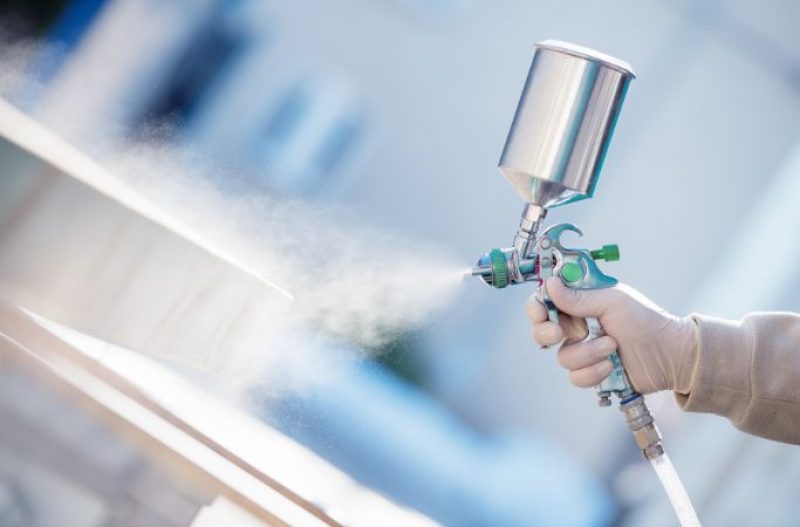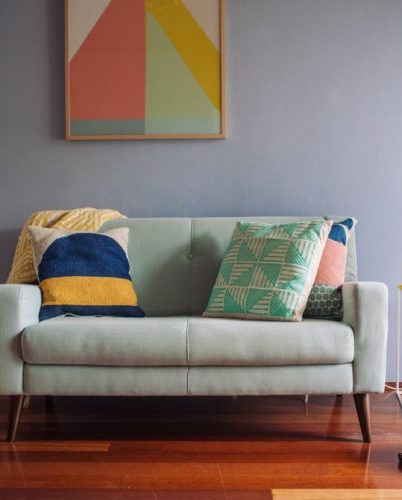When it comes to updating and changing the colour of your elements within your home such as uPVC or your kitchen cupboards, there are basically two options. You can either spray paint colours on your uPVC and kitchen in a process known as uPVC spraying or spray painting, or you can have your uPVC vinyl wrapped. Each process has its own pros and cons, and may suit different types of properties or homeowners for different reasons. If you’re wondering whether vinyl wrapping or spray painting uPVC windows or doors or your kitchen units is best for you, here’s what you need to know.
Which Is Cheaper, Vinyl Wrap Or Spray Paint?
Typically speaking, if you’re going to go with whichever is cheaper, the better choice is spray paint. Spray paint goes a long way and can cover larger surfaces with fewer resources compared to vinyl wrap.
The labour is also less intensive, and so what might take a week to wrap will probably only take a day or so for spray painting. In fact, the labour is that much simpler for spray painting that many people choose to do it themselves rather than hire professional spray painters. Vinyl wrapping on the other hand, especially for uPVC windows, is much more difficult. It will take multiple hours per window, so when you factor in multiple windows or multiple kitchen cabinets and kitchen doors, you’re looking at upwards of a week for some vinyl wrapping projects.

Which Looks The Best Out Of Vinyl Wrapping And Spray Painting?
Whilst appearances are objective, there are a few key points to consider when debating between vinyl wrap and spray painting that really separate the two and make one much more appealing than the other.
With kitchen spraying or uPVC window spraying, customers will often find that their newly painted units or windows are significantly less likely to discolour and will maintain their appearance for much longer. The use of high-quality paints means that spray-painted kitchens and uPVC spray painting will maintain their gloss finish and stylish appearance for anywhere up to 15 years. It is a smooth finish, too, and one that is suitably subtle in a way that does not suggest that it has been redecorated or refreshed.
Vinyl wrap, on the other hand, does not age well. It will usually only last a maximum of 6 years and will begin to peel and discolour after that. The colour and gloss finish on vinyl can easily fade and become brittle – especially when left in direct sunlight – which can mean that south-facing windows or kitchen cupboards will often begin to deteriorate before other elements.
Vinyl wrap also has fewer colour options in comparison to kitchen spray or uPVC spray painting, and so it restricts homeowners in what they can actually do. On top of that, vinyl wrapping cannot be done next to hot appliances otherwise the material will prematurely peel and warp. Likewise, vinyl wrap left in or near water can bubble away from the kitchen cupboards’ surfaces.
Can It Be Repaired?
A lot of people think that whilst spray painted kitchens are maybe better in some ways, that vinyl wrap on kitchen cupboards or uPVC windows can be easily repaired when torn or broken, whereas an issue with paint would involve re spraying the whole window or kitchen again.
In reality, though, vinyl wraps are not easily repaired. Once torn or scratched, the odds are that homeowners will need to replace the vinyl wraps that are damaged completely. The material being rubber and plastic means that there’s very little that can be done to repair issues like this.
Check out: How to repair tear in leather sofa
How Does Spray Painting Work?
Spray painting is an easy process that involves cleaning, priming, painting and drying. Drying times will typically depend on where is being sprayed and the temperature, but it typically does not take too long.
The process starts with cleaning, wherein the surfaces (either the kitchen cupboards or drawer fronts or the uPVC windows) will be first brushed down, and then wiped with a damp cloth, and then afterwards will be sanded down to allow the paint to properly adhere to the surface. Once that is done, the surface will be dried, and the primer can be applied.
Not all uPVC and kitchen paint requires a primer, but this will usually be made clear on the tin. The primer will be applied if needed, to make the paint more durable and to provide a flawless finish, and then, once dry, the spraying can begin.
Once the first coat has been sprayed on, it will be left to dry. Then another coat will be sprayed on and so on and so forth until the desired colour is reached. During this process, protective coverings will be placed around the surface that is being painted in order to prevent overspray.

How Does Vinyl Wrapping Work?
There are two types of vinyl. You can either opt for adhesive or heat activated. The former is most common. To use adhesive vinyl wrapping, a similar process to spraying is undertaken in that the surfaces are cleaned, any necessary attachments are removed and the surfaces are dried off. With vinyl wrapping there is no real need to put out protective coverings but some people choose to.
The vinyl is then applied and expertly pushed down onto the surface with a tool that helps to prevent air bubbles being caught beneath it. With heat activated vinyl wrapping, there is another step that will require heat to be applied to the vinyl wraps.

So Which Is Better?
Overall, the better choice is to get your uPVC windows, kitchen, doors, garage or even car spray painted. It is more cost effective and is a viable option for those who don’t wish to continuously decorate their home. There are plenty of colours to choose from, more colours than vinyl, and it is much more durable than vinyl wrapping.




